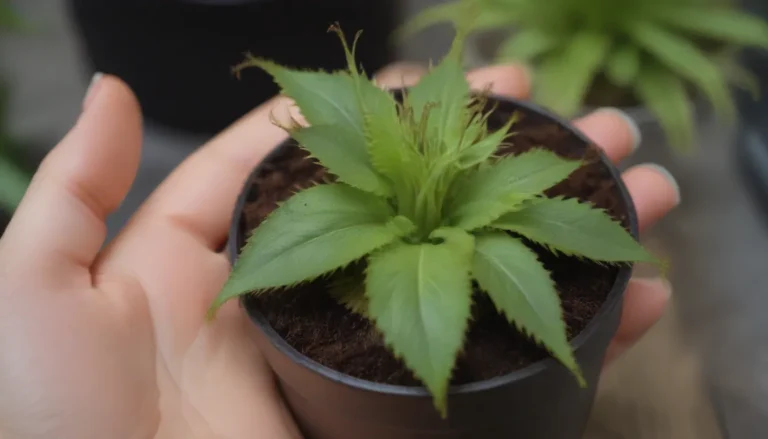How to Successfully Grow and Care for Basil Indoors

Basil is one of the most beloved herbs for home gardeners and culinary enthusiasts alike. Its vibrant leaves and delicious flavor make it a popular choice for adding freshness to a variety of dishes. While many people grow basil in their outdoor gardens, did you know that it’s also quite easy to cultivate this aromatic herb indoors? In this comprehensive guide, we’ll explore the ins and outs of growing and caring for basil inside your home.
Benefits of Growing Basil Indoors
Growing basil indoors comes with a host of benefits that make it an attractive option for many gardeners. Here are some reasons why you might want to consider cultivating basil indoors:
- Year-round Availability: Unlike outdoor gardens that are subject to seasonal changes, growing basil indoors allows you to have fresh herbs on hand all year long.
- Pest Control: Indoor basil is protected from outdoor pests and critters that can damage plants in the garden.
- Space Efficiency: Basil is a compact plant that can easily fit on a windowsill or in a small apartment, making it ideal for urban dwellers with limited space.
Getting Started: Can You Grow Basil Inside?
The key to successfully growing basil indoors is providing adequate light. Basil is a sun-loving herb that thrives in bright, sunny conditions. Here’s what you need to know to get started:
- Light Requirements: Place your basil plant near a sunny, south-facing window where it can receive 6 to 8 hours of bright light daily. Alternatively, you can use grow lights to provide the necessary light for your basil plant.
- Temperature and Humidity: Basil plants prefer temperatures of 70 degrees F or higher and thrive in humid conditions. Be sure to mist your plant occasionally, especially if your home is dry, to mimic the humidity levels it enjoys.
- Watering: Keep your basil plant consistently moist by watering it when the top layer of soil has dried out. Aim to provide about 1 inch of water per week for optimal growth.
How to Grow Basil Indoors
Whether you’re starting basil from seeds or purchasing a potted plant from the store, here are some essential tips for growing basil indoors:
Sunlight
- Basil plants, both indoors and outdoors, require at least 6 hours of full sun each day to thrive.
Artificial Light
- If using fluorescent bulbs, keep your basil plant under them for 12 hours a day, positioning the lights 2 to 4 inches away from the top of the plants to prevent burning.
Temperature and Humidity
- Ensure your basil plant is kept in a location with temperatures of 70 degrees F or higher and provide additional humidity through misting or by placing the plant on a bed of wet river rocks.
Watering
- Keep your basil plant regularly moist by watering it when the top layer of soil has dried out. Aim for about 1 inch of water per week for optimal growth.
Fertilizer
- Feed your basil plant with a small amount of diluted liquid fertilizer once a month to support healthy growth and leaf production.
Pruning and Maintenance
- Keep your basil plant healthy and productive by pruning it regularly and providing it with proper air circulation, sunlight, and moisture.
Container Selection and Care
Choosing the right container and soil for your basil plant is essential for its health and growth. Here are some tips for selecting the appropriate pot and soil:
- Container Size: Use a 4-inch pot for a starter basil plant to prevent root rot and provide adequate airflow.
- Potting Soil: Basil plants thrive in well-draining soil that is moist but not waterlogged. Amend high-quality potting mix with organic compost for best results.
- Drainage: Select a pot with ample drainage holes to prevent water buildup and root rot.
Potting and Repotting
- If starting basil from seeds, transplant the seedlings into a 4-inch pot filled with potting mix and compost. Repot the plant into a larger container if the roots outgrow the current one.
Summer Care and Transitioning Outdoors
When summer arrives, you may choose to move your basil plant outdoors for a change of scenery. Here’s what you need to know about transitioning your basil plant outdoors and back indoors:
- Outdoor Transition: Move your basil plant outdoors in the spring once nighttime temperatures are consistently above 50 degrees F. Water your plant more frequently while outdoors, as it will dry out faster than indoors.
- Bringing Basil Indoors: As fall approaches and temperatures drop below 50 degrees F, bring your basil plant back inside to protect it from the cold. Gradually adapt the plant to outdoor conditions before moving it inside for the winter.
Propagating Basil Indoors
Did you know that you can grow basil indoors from cuttings? Here’s how to propagate basil plants using cuttings:
- Selecting a Cutting: Choose a stem with at least one node from a healthy basil plant. Dip the cut end in rooting hormone and follow the instructions for growing plants from cuttings.
- Lifespan: Keep in mind that basil plants typically have a lifespan of 6 to 8 months, at which point they will die. You can prolong the life of your basil plant by snipping off any flower stalks that appear.
In conclusion, growing basil indoors can be a rewarding and enjoyable experience for gardeners of all skill levels. By providing your basil plant with proper light, water, and care, you can enjoy fresh herbs year-round and add a delightful flavor to your favorite dishes. Whether you’re a seasoned gardener or new to indoor herb cultivation, basil is a versatile and easy-to-grow plant that is sure to thrive in your home. Happy gardening!





